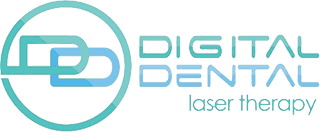Dr Darryl Moses talks on why he uses MLS® Laser
Well, we use the MLS® laser in our surgery for a multitude of applications. We use it in our craniofacial pain patients, we use it for patients post-surgery, and we use it quite extensively in orthodontic treatment.
In our craniofacial pain patients, it’s used both as a therapeutic and a diagnostic tool. In surgery, we use it to promote tissue healing because of its activation at a cell layer, and then we also use it in orthodontics, because it’s been shown in clinical studies to actually accelerate tooth movement by up to 30%. So we use it, as I say, extensively every day in our practice for a multitude of applications.
Well, its diagnostic capability is fantastic, so if you get a chronic pain patient, and you want to diagnostically assess where they’re at, at that stage, so, as part of your diagnostic skills you can use the laser to therapeutically treat that injury or that tissue problem at that point in time. Which, one, gives you the diagnostic ability to assess that situation, but also two, it helps in the patient understand that what you’re actually discussing or talking about actually has clinical benefit.
In terms of treatment? Well as I say, post-surgery, it’s very good at assisting tissues to heal very, very rapidly. In orthodontics, I can tell you from clinical experience, that if you’re actually doing things like arch expansion, maxillary arch expansion, it certainly increases the effectiveness of that treatment in terms of treatment time, and also if during orthodontic treatment, particularly in the use of elastics, it really accelerates tooth movement out.
The other factor is of course, with a lot of patients, they have a multitude of problems. So, for a lot of chronic pain, in fact, with orthodontic patients, a lot of these patients have issues such as cervical spine pain and a range of other issues are almost go hand in hand. So, in terms of treatment, we’re actually co-treating. The laser gives us the ability to co-treat a number of these issues together in conjunction. That’s one of its huge advantages. As a diagnostic tool, it is critical in our practice in terms of being able to, one, myself ascertain that what I’m discussing with the patient, or therapeutically, or clinically trying to diagnose, it actually confirms that, and two, in terms of therapeutic treatment it has enormous advantages for us.
Oh, the patients are amazed. The patients are quite amazed. You’ll get some patients who are quite sceptical at the start, certainly, and at the end of treatment actually… We have patients now, that we’ve certainly corrected most of their issues, and we corrected a lot of their problems with laser. Perhaps, these patients come in once a month for laser treatments, certainly.
Probably my biggest sceptic was one of my new nurses that started, who sort of looked at me out of the corner of her eye one day and said, “What’s that you’re doing?”, and then she came into work about a week after she’d started, with chronic neck and thoracic pain, and she said, “Just put that laser on me.” And of course, within one session of ten minutes, this girl was down to have steroid injections, and within a ten-minute session that pain had totally subsided, and of course, she’s now my greatest advocate for the laser in the practice.
Its major clinical benefit is the therapeutic effect works very quickly. I must say that the therapeutic effect lasts variably, depending on the patient and depending on the extent of the injury, but certainly as an adjunct to treatment, I can’t be without this in my practice.
Well, we of course discuss it after getting a comprehensive set of records, we look at the treatment options, and I explain to them, because for most of our patients, in dentistry today with what we do, it’s a multifaceted approach to treatment.
So, we’ve built a team together over time, including sleep physicians, ENT surgeons, myself, we have a clinical psychologist, I work with a lot of allied health professionals, chiropractors, acupuncturists, allergists, other different people in a multifaceted approach to health. And what’s very interesting is that in fact a lot of my allied healthcare professionals, like the chiropractors, have actually come and observed and found out exactly what we’re doing, because for these patients, as they get referred they will say “Well, look there I actually did da da da da da.”
These people are quite impressed with what they see, and they are very keen to see the research articles. I think the most important thing with this laser is the research to support it. It has enormous research to support its efficacy in treatments.
Like anything in dentistry, I always say, look at the system first before you purchase. I’m always of that ilk, but certainly, this is a device with enormous amounts of clinical research to support its use, and as a wet-fingered hands-on practitioner, as I can say, it’s a crucial part of what I use in my practice every day in the treatment of patients.
Get in touch to book a demonstration
